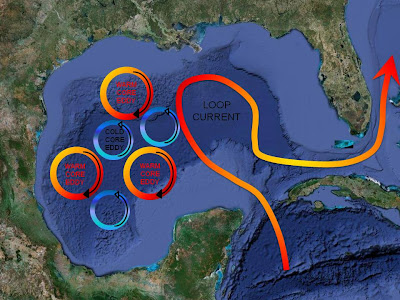
HONOLULU — The $48-a-plate shark fin has been a favorite dish to celebrate 80th birthdays and fete out of town VIPs since Vienna Hou's Chinese restaurant opened 25 years ago.
But Kirin Restaurant customers won't be dining in that style starting July 1, 2011, when Hawaii becomes the first state in the nation to ban the possession of shark fins. The state is attempting to help prevent the overfishing and extinction of sharks around the world.
"Something will be missing," said Hou, who grew up watching her father sell shark fin as part of his seafood trading business in Hong Kong. "Decent Chinese restaurants — they all serve shark fin."
Gov. Linda Lingle on Friday signed a bill prohibiting the possession, sale or distribution of shark fins. The bill passed the state House and Senate with broad support earlier this year.
The legislation generated some grumbling in Hawaii's sizable Chinese community — more than 13 percent of the state population is Chinese or part Chinese. Many consider shark fin a delicacy and important part of Chinese culture.
The ban also comes as the tourism-dependent state expects a surge in affluent Chinese visitors.
Restaurateurs say about a dozen establishments in Hawaii serve shark fin, which doesn't taste like much by itself. The flavor in shark fin dishes comes from the ingredients it's cooked with, either the rich sauce it's served with on a plate or the savory pork and chicken base in shark fin soup.
Some people eat it for the supposed health benefits, claiming that it's good for bones, kidneys and lungs and helps treat cancer. Shark fin is also considered a status symbol in high-end restaurants, a dish to impress or lavishly treat guests. At Kirin, on a busy street near the University of Hawaii, one soup serving is $17.
In Hong Kong, high end restaurants can charge $1,000 for premium shark fin.
"I don't think you should say it should be illegal to have shark fin," said Johnson Choi, president of the Hong Kong China Hawaii Chamber of Commerce. "Shark fins are part of food culture — Chinese have had food culture for over 5,000 years."
Environmentalists say the tradition is leading to a dangerous depletion of sharks worldwide.
A report last year by the International Union for the Conservation of Nature estimates 32 percent of open ocean shark species are in danger of becoming extinct primarily because of overfishing.
Hawaii's lawmakers heard testimony that sharks are being killed for their fins at a rate of 89 million per year.
"It's not a local issue. It's an international issue," said Sen. Clayton Hee, D-Kahuku-Kaneohe, the sponsor of the Hawaii bill.
Restaurants serving fins will have until next July to run through their inventory. After that, those caught with fin will have to pay a fine between $5,000 to $15,000 for a first offense. A third offense would result in a fine between $35,000 to $50,000 and up to a year in prison.
It's designed to go a step further than the previous law which aimed to control shark finning — the act of cutting fins off sharks at sea and dumping their carcasses in the ocean — by banning the landing of shark fins at Hawaii ports.
Shark conservation activists say they hope the law inspires other states and the federal government to follow suit.
"This is a landmark bill," said Marie Levine, the founder and executive director of the Shark Research Institute in Princeton, N.J. "This is enormously important for the conservation of sharks."
Conservation efforts suffered a major setback earlier this year when an effort to protect six shark species under the 175-nation Convention on International Trade in Endangered Species, or CITES, failed in March.
Hee, who is of Chinese and Native Hawaiian descent, rejected the argument that shark fins shouldn't be banned because they're an important part of Chinese culture. He argued the food is only eaten by an elite few at Chinese restaurants.
"It's a tradition of serving shark fin to those who could most afford it. It's an indulgent activity," Hee said.
In contrast, he noted sharks are deeply ingrained in Hawaiian culture as ancestral gods, or aumakua, and are featured prominently in ancient legends.
The law's power may be primarily symbolic given Hawaii is a small market for shark fin, especially compared to Hong Kong. The IUCN estimates Hong Kong handles at least 50 percent and perhaps 80 percent of the world's shark fin trade.
Some restaurant managers — both inside and outside of the tourist mecca of Waikiki — said their biggest eaters of shark fin are Japanese tourists who like to order the dish because it's three to four times cheaper here than back home.
"I doubt it very much that people will be very disappointed," said David Chui, manager of Legends Seafood Restaurant.
Carroll Cox, president of the Hawaii-based group EnviroWatch, hopes the governor makes enforcement a high priority. Other countries will also have to commit to limit the shark fin trade for any restrictions to have an effect, he said.
"People learn to circumvent the law, especially when you have a product that's expensive and in demand," said Cox.
Source: Associated Press
About Oceanic Defense
We are an international non-profit organization with members in over 60 countries, spanning 6 continents with 1 mission; healthy aquatic ecosystems free from human abuse and neglect. Oceanic Defense teaches people to protect our oceans by acting responsibly as consumers and by making smart decisions in our daily lives. Whether we are buying groceries, commuting to work, planning a vacation or advocating within our own communities; each action we take or decision we make either helps or hurts our oceans. We empower people to be part of the solution rather than part of the problem and work together to protect our blue planet.
Join us on Facebook:www.facebook.com/OceanicDefense
Visit our official website:www.oceanicdefense.org
Follow us on Twitter:www.twitter.com/OceanicDefense











